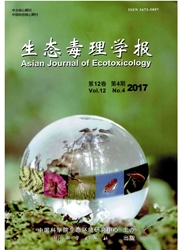

 中文摘要:
中文摘要:
为了促进土壤环境质量标准的修订进程,势必要全面系统地开展土壤环境质量基准的研究工作.理论上,水、土之间是一个相互联系、互相依赖和关系密切的系统;同时,水生态毒理及其质量基准研究起步早,研究方法相对成熟.因此,从水质基准来推导土壤环境质量基准具有一定的科学依据与实践意义.本文首先从土-水系统中污染物分布的影响因素及其环境行为两方面简要阐述污染物在土-水系统中的分布规律;然后,扼要介绍了平衡分配(EqP)理论及其在环境质量基准研究中的应用;之后,从EqP方法的不确定性、毒理数据选用的争议性、K.c的局限性和分配系数的确定方法选择性等方面,探讨了平衡分配法在土壤环境质量基准研究中应用的瓶颈问题;最后,对此项研究进行了总结与展望.
 英文摘要:
英文摘要:
The systematic and comprehensive research on the soil-environmental quality criteria is of great urgency to promote the revision process of soil-environmental quality standards. Because of the close relationships between soil and water and the earlier start of studies on water ecotoxicology and water-quality criteria, it is of the practical significance and value to some degree to carry out the research on the conversion between water-quality criteria and soil-environmental quality criteria. At first, the distribution of toxic pollutants in a soil-water system is briefly expounded on the basis of their influencing factors and environmental behavior. Then, the EqP theory and its application in the field of environmental quality criteria are generally introduced. Next, the bottleneck problems about the application of the EqP method in the development of soil-environmental quality criteria are discussed from four aspects, that is, the uncertainty of the EqP method, the controversial problems about the selection of toxic data, the limitation of Koc and the selection of determining methods for the partition coefficients. Finally, the research on soil-environmental quality criteria is summarized and prospected.
 同期刊论文项目
同期刊论文项目
 同项目期刊论文
同项目期刊论文
 期刊信息
期刊信息
